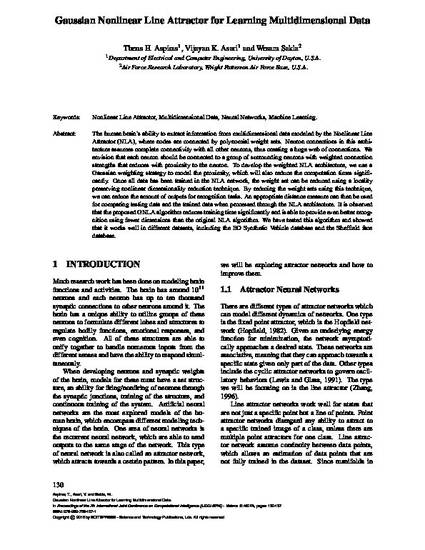
The human brain’s ability to extract information from multidimensional data modeled by the Nonlinear Line Attractor (NLA), where nodes are connected by polynomial weight sets. Neuron connections in this architecture assumes complete connectivity with all other neurons, thus creating a huge web of connections. We envision that each neuron should be connected to a group of surrounding neurons with weighted connection strengths that reduces with proximity to the neuron. To develop the weighted NLA architecture, we use a Gaussian weighting strategy to model the proximity, which will also reduce the computation times significantly.
Once all data has been trained in the NLA network, the weight set can be reduced using a locality preserving nonlinear dimensionality reduction technique. By reducing the weight sets using this technique, we can reduce the amount of outputs for recognition tasks. An appropriate distance measure can then be used for comparing testing data and the trained data when processed through the NLA architecture.
It is observed that the proposed GNLA algorithm reduces training time significantly and is able to provide even better recognition using fewer dimensions than the original NLA algorithm. We have tested this algorithm and showed that it works well in different datasets, including the EO Synthetic Vehicle database and the Sheffield face database.
Available at: http://works.bepress.com/vijayan_asari/10/

This document is provided for download by permission of the publisher. Permission documentation is on file.